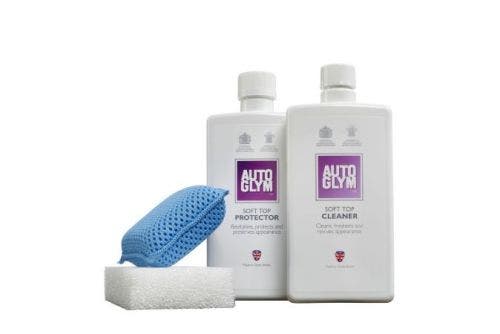As a professional car care specialist, it's important to provide top-notch service to your customers, including caring for their convertible soft tops. Convertible owners know that keeping their soft top clean and protected not only enhances the appearance of their vehicle but also ensures its longevity. In this guide, we will provide you with the steps to follow when cleaning and protecting a customer's soft top using the Autoglym Soft Top Clean & Protect Complete Kit.


Why should you even clean a soft top? If a vehicle soft top is not cleaned and reproofed regularly, it can suffer from various problems such as:
- Dirt and grime build-up: Over time, dust, dirt, and grime can accumulate on the surface of the soft top, making it look dirty and unsightly.
- Fading: UV rays from the sun can cause the colour of the soft top to fade over time, making it look dull and worn out.
- Stains: Bird droppings, tree sap, and other contaminants can leave stubborn stains on the soft top, which can be difficult to remove if left untreated.
- Mold and mildew: Moisture can accumulate inside the soft top, creating an environment that is conducive to the growth of mold and mildew, leading to unpleasant odours and damage to the fabric.
- Tears and punctures: If the soft top is not maintained properly, it can become brittle and prone to tears and punctures, which can be costly to repair.
- Reduced lifespan: All of the above issues can contribute to a reduction in the lifespan of the soft top, meaning it will need to be replaced sooner than if it had been properly maintained.
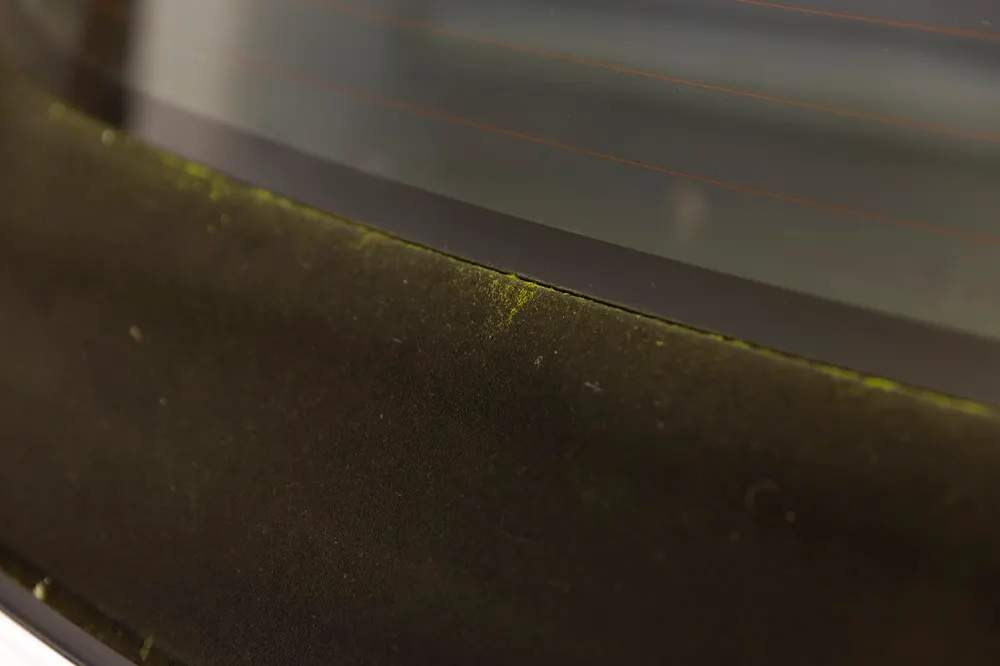

How to clean and protect a soft top with Autoglym
Step 1: Inspect the Soft Top Before you begin cleaning the soft top, it's important to inspect it for any damage or areas that require special attention. Look for any tears, holes, or frayed stitching. If you notice any damage, inform your customer - and if the damage is substantial, recommend that they have it repaired before proceeding with the cleaning process.
Step 2: Prepare the Soft Top
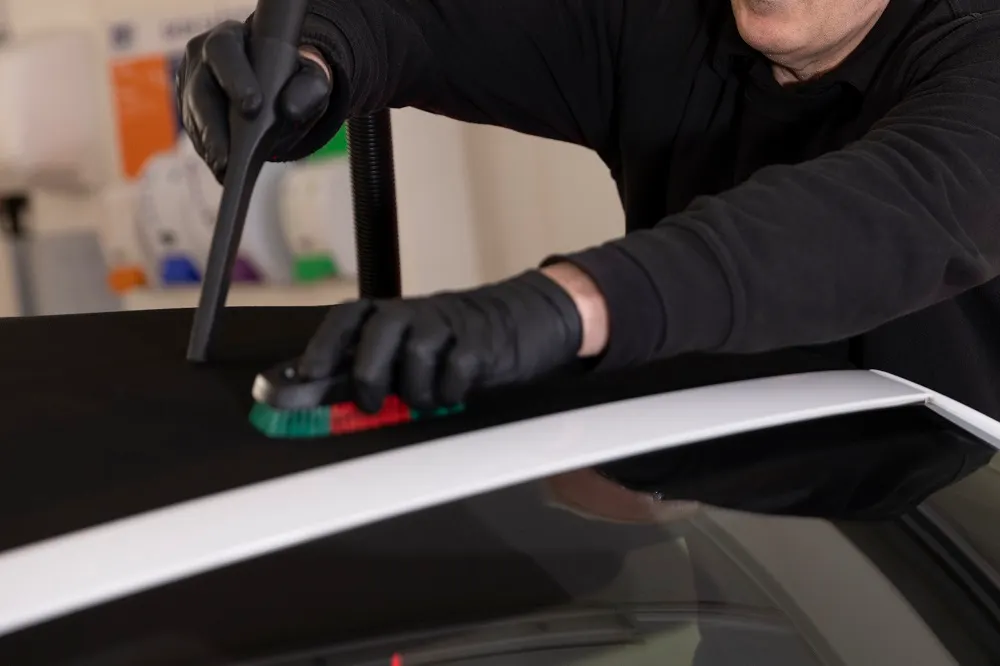

Once you have inspected the soft top and determined that it's in good condition, it's time to prepare it for cleaning. Begin by removing any loose dirt and debris using vacuum cleaner and a brush. Pay close attention to the seams and crevices where dirt tends to accumulate.
Step 3: Apply Soft Top Cleaner Autoglym Soft Top Clean & Protect Complete Kit comes with a specialised cleaner that is designed to remove dirt, grime, and bird droppings from soft tops. Shake the bottle well and apply the cleaner liberally to the soft top, making sure to cover all areas evenly. For a 4-seat soft top, aim to use half the bottle.
Step 4: Agitate the Cleaner
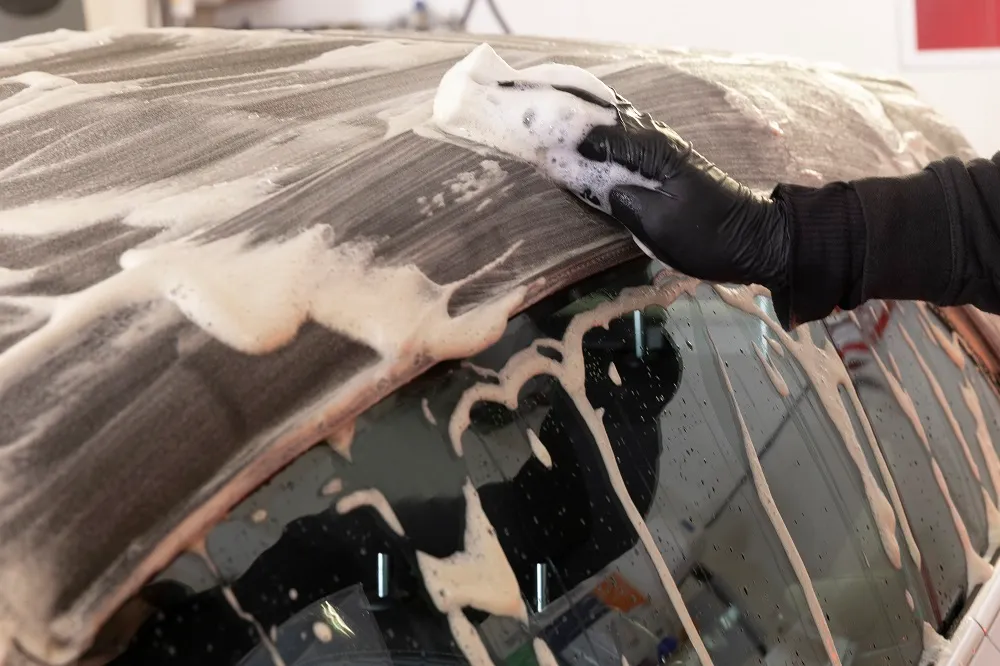

Using the course sponge supplied, agitate the cleaner into the soft top, ensuring that you work it into the seams and crevices to remove all dirt and grime. Concentrate on any green areas that have started to grow…
Step 5: Rinse the Soft Top
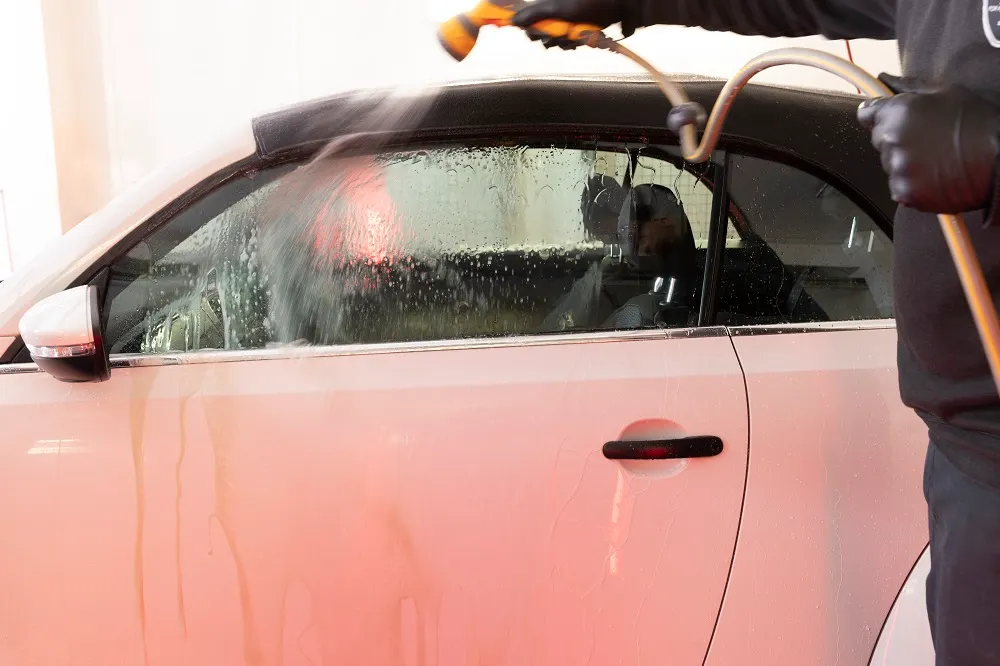

Using a gentle stream of water, rinse the soft top thoroughly to remove all the cleaner, making sure to rinse off all the cleaner from the seams and crevices. This is possibly the most important stage of the process; you have to get ALL of the cleaner out. Any remaining cleaner will impair the beading performance of the proofer. So run the water out of an open hose with one hand and rub the roof with the palm of your other hand. Work round the roof till all the bubbles have gone. When you think you are done, do it again for good measure! Finish by removing excess water from the hood but leave it damp. Laying a drying towel on top and removing it quickly should do the trick.
Step 6: Apply Soft Top Protector
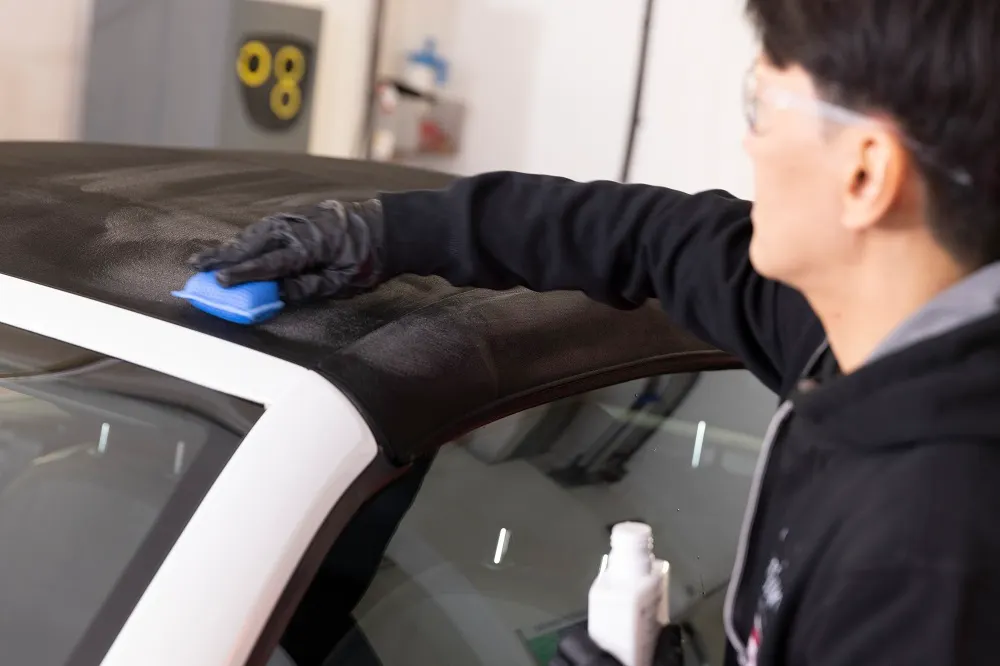

Once the soft top is clean, it's time to protect it from the elements. Autoglym Soft Top Clean & Protect Complete Kit comes with a specialised protector that helps to repel water and in doing so, prevent the growth of mold and mildew. Shake the bottle well and apply the protector to the soft top using the applicator provided, ensuring that you cover all areas evenly. Apply in a crosshatch pattern, you should aim to use half a bottle on a 4-seat convertible.
Step 7: Allow the Protector to Dry completely before returning the vehicle to your customer. Be sure to inform them not to expose the soft top to any moisture until the protector has fully dried.
FREQUENTLY ASKED QUESTIONS
Can I use a pressure washer on a fabric car roof?
It is not recommended to use a pressure washer on a fabric car roof or soft top. High-pressure water can damage the fabric, especially if it is already weakened or has small tears or holes. The force of the water can push debris deeper into the fabric, making it more difficult to remove, and can also cause the fabric to stretch, warp or sag. Additionally, the high pressure can potentially push water and cleaning products deep into the fabric, which means additional rinsing and effort is required to extract all the detergent prior to proofing.
Can I use TFR or APC to clean a fabric soft top?
As a Professional you'll be used to using multi-purpose products for a whole range of surfaces, but it is not recommended to use Traffic Film Remover (TFR) or All-Purpose Cleaners on a vehicle soft top or fabric roof. They can be too harsh for use on delicate fabrics, such as those used in vehicle soft tops and may cause discoloration, shrinkage, and even damage to the soft top fabric, and can also strip away any water-repellent coating, leaving the soft top vulnerable to water damage. Instead, it's best to use a specialised soft top cleaner that is designed for use on delicate fabrics, this will ensure that the soft top is cleaned effectively and safely, without causing any damage to the fabric.
How often should you clean and reproof a vehicle soft top?
How often you should clean and reproof a vehicle soft top depends on several factors, such as the climate, frequency of use, and the condition of the soft top. As a general rule of thumb, it's recommended to clean and reproof a vehicle soft top at least once or twice a year to maintain its appearance and extend its lifespan. However, if the vehicle is frequently exposed to harsh weather conditions, such as rain, snow, or extreme heat, it may be necessary to clean and reproof the soft top more often. Additionally, if the soft top becomes stained, soiled, or contaminated with debris, it's best to clean it as soon as possible to prevent the build-up of dirt and grime. Regularly cleaning and reproofing the soft top can help protect it from water damage, UV rays, and other environmental factors that can cause discoloration, fading, and deterioration. It also helps maintain the soft top's water-repellent properties and prevent the growth of mold and mildew, ensuring a long-lasting and attractive appearance of vehicle's soft tops.
What are vehicle soft tops made of?
Vehicle soft tops can be made from a variety of materials, depending on the make and model of the vehicle, as well as the desired level of durability and performance. Here are some of the most common materials used:
- Vinyl - Vinyl is a synthetic material that is commonly used because it is durable, waterproof, and relatively affordable. It is often used in less expensive or older vehicles.
- Canvas - Canvas is a woven fabric that is known for its durability and strength. It is often used in high-end or luxury vehicles because it offers a more luxurious look and feel than vinyl.
- Cloth - Cloth is a soft and lightweight material that is often used in convertible tops for sports cars and other high-performance vehicles. It is designed to provide a balance of comfort and durability.
Some soft tops may have additional layers or coatings for added protection and performance. For example, some vinyl soft tops may have a layer of foam padding for added insulation and noise reduction, while some canvas or cloth soft tops may have a layer of waterproofing or UV-resistant coating to help protect against damage from the elements. It's important to note that the materials and layers used for vehicle soft tops can vary widely depending on the make and model of the vehicle, so it's always best to consult the manufacturer's specifications and recommendations when caring for a soft top.
Conclusion As a car care professional, it's essential to provide excellent service to your customers, including caring for their convertible soft tops. By following the steps outlined in this guide and using Autoglym Soft Top Clean & Protect Complete Kit, you can ensure that your customers' soft tops are clean, protected, and looking like new. With proper care, your customers' convertibles will be a source of enjoyment for years to come.


